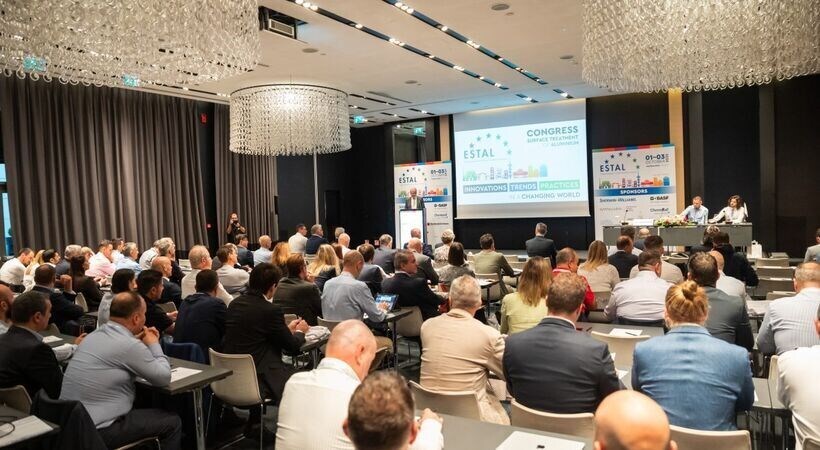

The ESTAL Congress in Thessaloniki, which took place from October 1 to 3, 2025, once again demonstrated the importance and power of European industry exchange. Both the extensive program and the personal, professional discussions provided important inspiration for all participants. The experts on and off stage contributed their extensive experience, transforming the congress into a practical platform for technology transfer at the European level.

The focus of the biennial ESTAL Congress was primarily on current developments influenced by decisions of the European Commission, such as the aluminium value chain in a changing Europe or the impact of new EU construction regulations on aluminium surface treatment and global market trends. Our keynote speakers addressed the competitiveness of the European aluminium value chain in the current global trade context, while the European Commission and industry experts gave an overview of the EU legislative context.
Special attention was paid to innovations in resource efficiency and industrial emissions, to improve the sustainability and reduce the carbon footprint of the aluminium surface treatment value chain. Then, several presentations dealt with innovative products and finishing processes, including colour innovation, nanoparticle-enhanced anodic oxide coatings, conversion treatments of 3D-printed aluminium, and artificial intelligence applied to painting lines.
Finally, several presentations dealt with powder coating and anodising of recycling-based aluminium alloys, which is fundamental to the decarbonisation of the aluminium value chain. The organizers sent a strong message with this year's keynote speaker at the beginning of the second day of the congress: Yannis Maniatis, Vice President of the Progressive Alliance of Socialists and Democrats (S&D), Member of the European Parliament, and former Minister for the Environment, Energy and Climate Change. He provided professional insight into the "Aluminum Sector at a Crossroads: Challenges and Opportunities in the Context of Ecological and Strategic Transition." Maniatis' participation impressively underscores that surface finishing issues are being politically recognised and addressed in the EU, and highlights the bridge-building between industry and politics.
The ESTAL Congress also offered an excellent opportunity to deepen cross-border contacts and strengthen networks. The event attracted experts from a wide variety of sub-sectors and facilitated an intensive exchange of views on current challenges and opportunities. The ESTAL Congress also scored highly with the large-scale exhibition of the numerous, diverse sponsors from the industry. Participants were able to engage in face-to-face discussions at the booths and discuss future challenges. Various accompanying events, such as an impressive visit to an aluminium recycling facility and various surface finishing lines from Alumil in Kilkis, approximately 50 kilometres away, thrilled the participants.
The conclusion after three impressive and highly dynamic days of events: The ESTAL Congress once again set important standards for the surface finishing industry. It brought together trends, EU-wide requirements, and practical solutions in a compact program. The combination of face-to-face meetings, political involvement, and technical excellence illustrates how Europe can grow together in the surface finishing sector, to the benefit of the industry, the supply chains, and the environment in every single country. Therefore, the conclusion can only be: it was a pleasure to have been there.
Note: This article has been issued by ESTAL Congress and has been published by AL Circle with its original information without any modifications or edits to the core subject/data.
Responses








